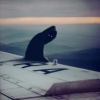Search the Community
Showing results for tags 'schuckert'.
Found 1 result
-
Attention Pilots! We are proud to announce that we are now accepting Pre-Orders for three new Collector Planes! We continue to build and offer interesting and legendary aircraft for the Great Battles series that enhances gameplay and offers new experiences to our customers. The following are now available for Pre-Order in the IL-2 Official Webstore! All feature a 20% Pre-Order Discount! - Sopwith Snipe - Siemens-Schuckert D.IV - Spitfire Mk. XIV w/ Teardrop Canopy All three of these planes are in development and we plan to release them later this year and each represents the pinnacle of aircraft design for their respective eras. Sopwith Snipe 7.F1 The Sopwith Snipe was a late-war entry into combat and represented the pinnacle of British Great War fighter aircraft. It began replacing Sopwith Camels in the autumn of 1918 and went on to server post-war after the Armistice was signed in November 1918. The Snipe was the last British fighter to come equipped with a rotary engine – the Bentley BR2. The BR.2 made 230 hp which allowed the Snipe to be a little faster than the Camel. Although not blistering fast by 1918 standards, it was a very maneuverable fighter. The Snipe had a faster rate of climb than the Camel and it could fight superior German machines more effectively at higher altitudes. The Snipe came armed with two .303 machine guns and had improved visibility over its predecessor. It could also carry a small bomb load like the Camel. It’s combat life was short, but both British and Australian squadrons had success with it before the war ended. Siemens-Schuckert D.IV The Siemens-Schuckert D.IV came very late to the Great War that was too late to change Germany’s fortunes, but what machines did make it to front-line squadrons acquitted themselves well. The SS.DIV was the end result of a robust line of Siemens-Schuckert aircraft that saw service in the war and it came with a unique feature. The 200-hp Siemens Haiske SH.IIIa rotary engine had a crankshaft that rotated opposite of the engine and the propeller ’s rotation in an attempt to reduce the torque. The four-bladed propeller gave it a fast rate of climb and a high speed. The SS.DIV was even faster than Germany’s mainstay front-line fighter, the very successful Fokker D.VII. It was also very maneuverable, but reportedly had nasty stall behavior when pushed too far. The SS.DIV was armed with two 2 × 7.92mm machine guns. Spitfire Mk. XIV w/ Teardrop Canopy The Spitfire Mk. XIV, which entered service at the end of 1943, was originally built with a “high back” rear fuselage which restricted visibility to the rear of the plane. To rectify this problem, development of the Mk. XIV with a cut-down rear fuselage and tear-drop canopy began to be developed and built at the end of 1944. These improved Spitfire Mk. XIVs featured full-span wings and were equipped with 2x .50 cal. machine guns and 2x 20 mm Hispano cannons; they could also be fitted with bomb racks to carry 250 lb. and 500 lb. bombs. An additional 64-gallon fuel tank was also fitted in the rear fuselage, which increased the range of the Mk. XIV to over 610 miles on internal fuel. The same Griffon engine that powered the original Mk. XIVs also powered this new model. For reconnaissance work, a camera could be fitted behind the canopy; such planes were known as Fighter Reconnaissance Mk. XIVs and were fitted with clipped wingtips as standard. Spitfire Mk. XIVs with the cut-down rear fuselage and tear-drop canopy started entering service with the Royal Air Force’s 2nd Tactical Air Force in March 1945 and continued in operational service after the end of the war in Europe in May 1945. These improved Mk. XIVs also began to be sent to the South-East Asian Theater in June 1945 but arrived too late to see any combat against the Japanese. The Sturmovik Team appreciates your continued support as we complete our current development schedule and plan for a busy future! See you in the skies! The Sturmovik Team
-
- 2
-

-

-
- il2
- announcing
- (and 6 more)

